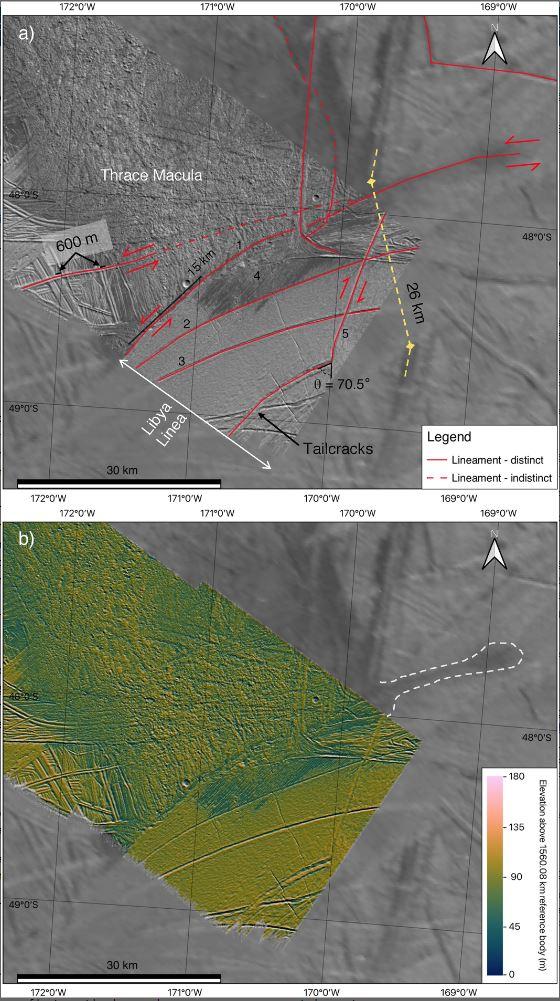New Publication: Chaotic terrain on Jupiter's moon Europa
News from Aug 29, 2023
A team of researchers from Freie Universität Berlin led by Pietro Matteoni from Prof. Frank Postberg's group published an article proposing a new hypothesis on the formation and evolution of a chaotic terrain on Jupiter's moon Europa, reconstructing the geologic history of the area. The identification of the youngest terrains in the region has significant implications, as it represents the freshest possible material that could be investigated by future spacecraft in this region, such as the upcoming NASA's Europa Clipper mission. The article was published on August 11th on AGU's Journal of Geophysical Research.
Europa, an icy moon of Jupiter with a large subterranean water reservoir, has unique surface features known as chaos terrains, believed to result from interactions between its subsurface ocean and surface. Of these terrains, Conamara Chaos and Thera and Thrace Maculae are prime targets for upcoming missions to investigate the astrobiological potential of Europa. However, Thrace Macula, which is situated between Agenor Linea to the north and Libya Linea to the south (two large-scale bands, linear geological features), remains poorly understood. In this study, we used detailed mapping of faults and lineaments, together with topographical analysis, to propose a new hypothesis for the formation and evolution of Thrace Macula. Our findings suggest that preexisting tectonic faults constrained its emplacement and distribution, while a sequence of events starting with the formation of Agenor Linea, followed by Libya Linea first and Thrace Macula later, culminated in strike-slip tectonic activity likely driven by Libya Linea that displaced a portion of Thrace Macula. These results imply that future spacecraft could sample Thrace's subsurface material uplifting along faults postdating its formation, the freshest available in this region. This research sheds light on Europa's regional history and its astrobiological potential.

Figure: Inset contained within the yellow rectangle in Figure 1, depicting the transitional area between the chaos terrain Thrace Macula and the smooth band Libya Linea. (a) Annotated structural map. [...] (b) Topographic data derived from Digital Terrain Model. [...] (more Information in the paper)